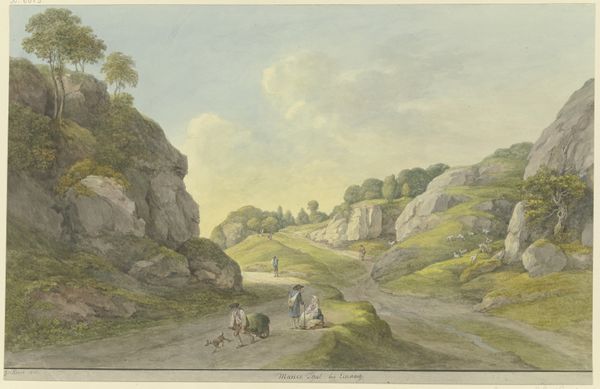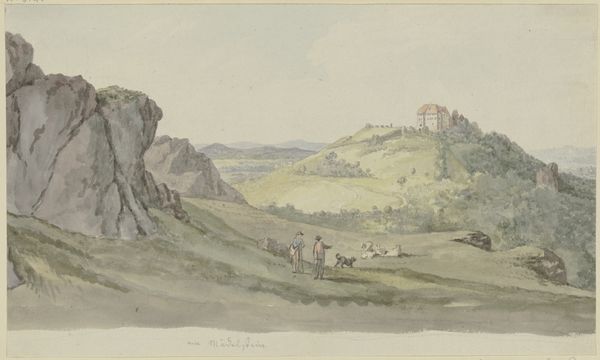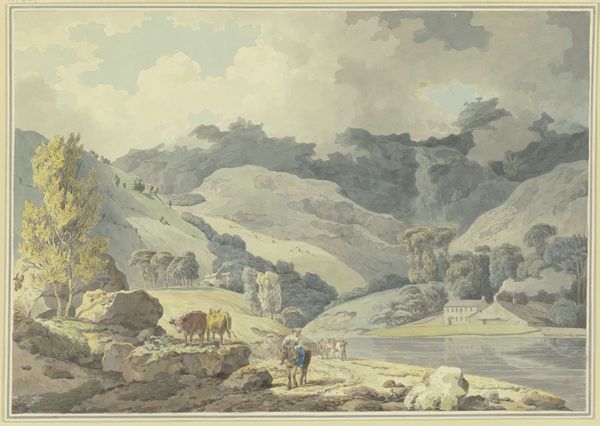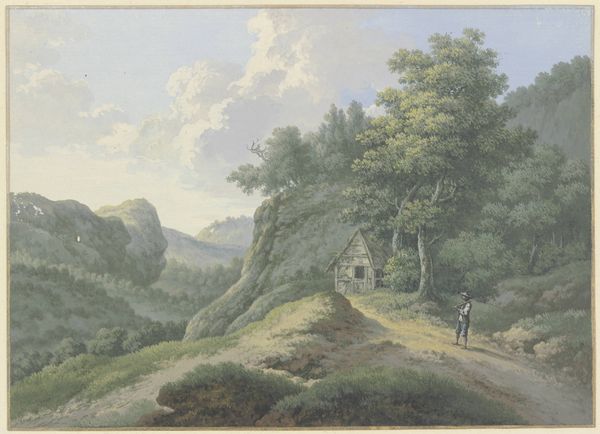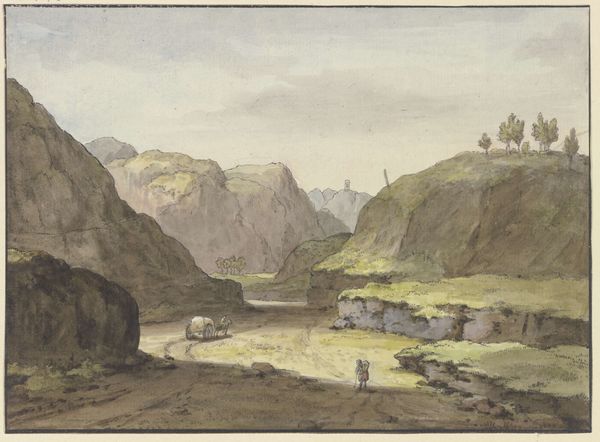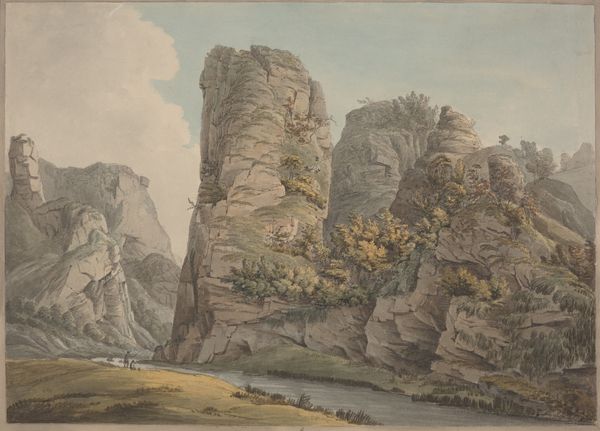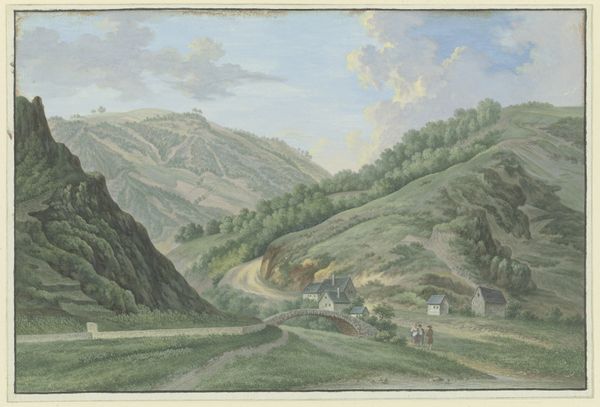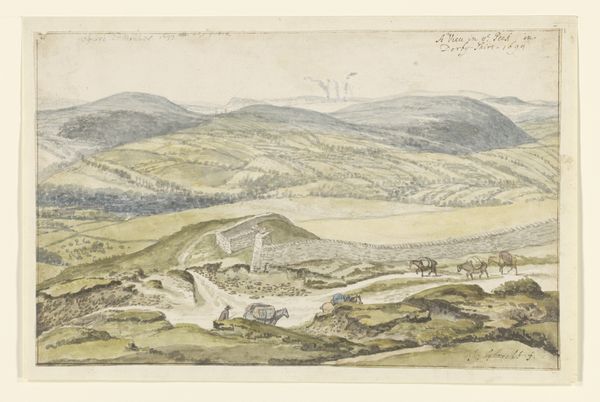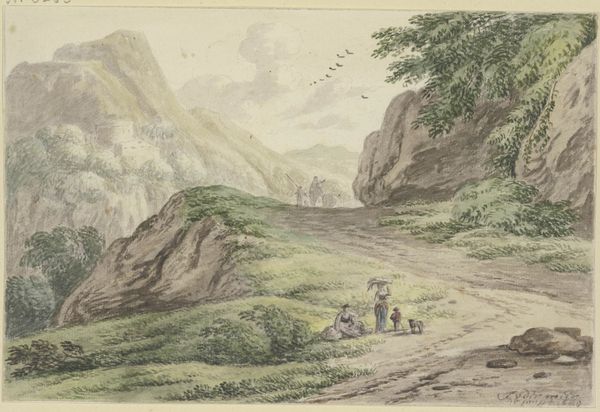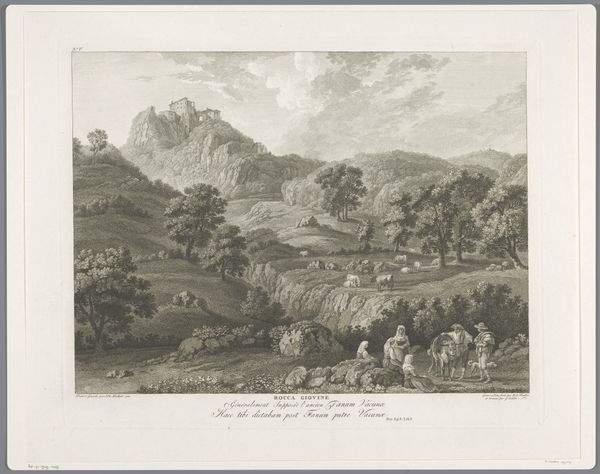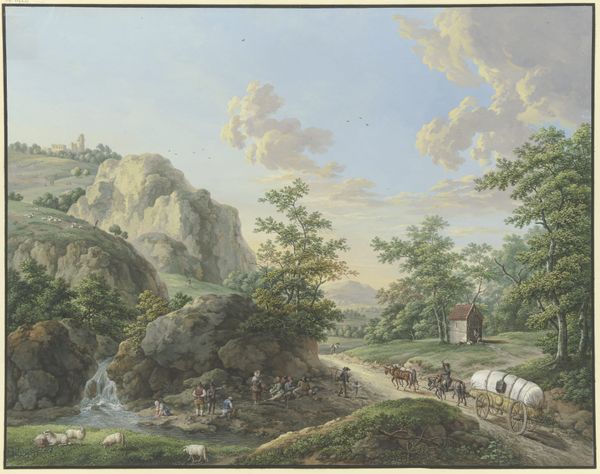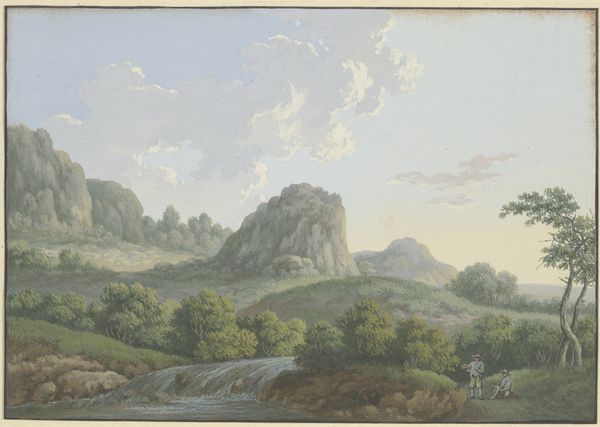
drawing, plein-air, watercolor
#
landscape illustration sketch
#
drawing
#
plein-air
#
landscape
#
watercolor
#
romanticism
#
watercolor
Copyright: Public Domain
Editor: Here we have Georg Melchior Kraus’s "Marien valley near Eisenach," a watercolor drawing from 1805. The landscape is quite serene, but something about the figures positioned within it feels a little unsettling. How do you interpret this work? Curator: That unsettling feeling is perceptive. Landscape painting of this era, while seemingly objective, was deeply intertwined with nationalism and ideas of belonging. What might it mean to portray the land, especially a ‘valley’ – traditionally a feminine symbol – in 1805? Editor: Well, I know that romanticism was trending and I'm wondering if the painting romanticizes and idealizes nature, possibly glossing over any social tensions that may have existed within that space. Curator: Exactly. Kraus paints a picture of harmony, but consider the socio-political context. The figures, seemingly at peace within this idyllic setting, might obscure realities of labor, class, and perhaps even displacement. Whose story isn't being told here? Who is allowed to occupy, to 'own' this landscape? Think about the romanticized image of the rural German landscape, that's ripe for exploitation during the rise of industrial capitalism. The soft colors and idealized forms obscure the potential for the exploitation that inevitably accompanied it. Editor: So it's less about the visual representation and more about what's not being represented and what ideology the scene serves? Curator: Precisely. What does it mean to present an unproblematic relationship between the figures and the land at that historical moment? It compels us to think critically about representation and its role in shaping collective consciousness and social relations. Editor: I hadn't considered that landscapes could be so loaded. This gives me a lot to think about in terms of what these types of art were really communicating back then. Curator: Indeed. Every stroke, every figure placement is potentially a political statement, or, perhaps more subtly, a reflection of the dominant ideologies of the time. It encourages a deeper exploration of the interplay between art and social structures.
Comments
No comments
Be the first to comment and join the conversation on the ultimate creative platform.
